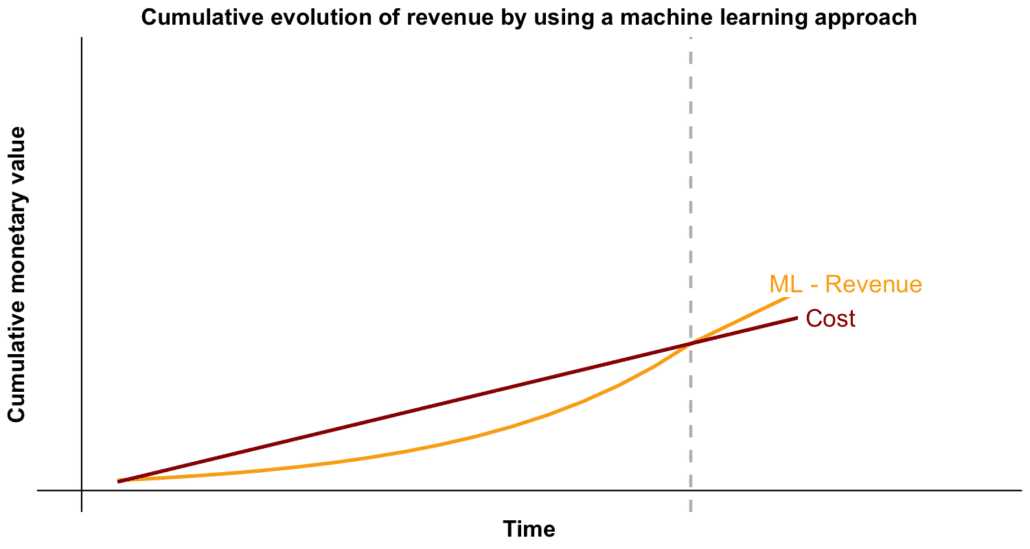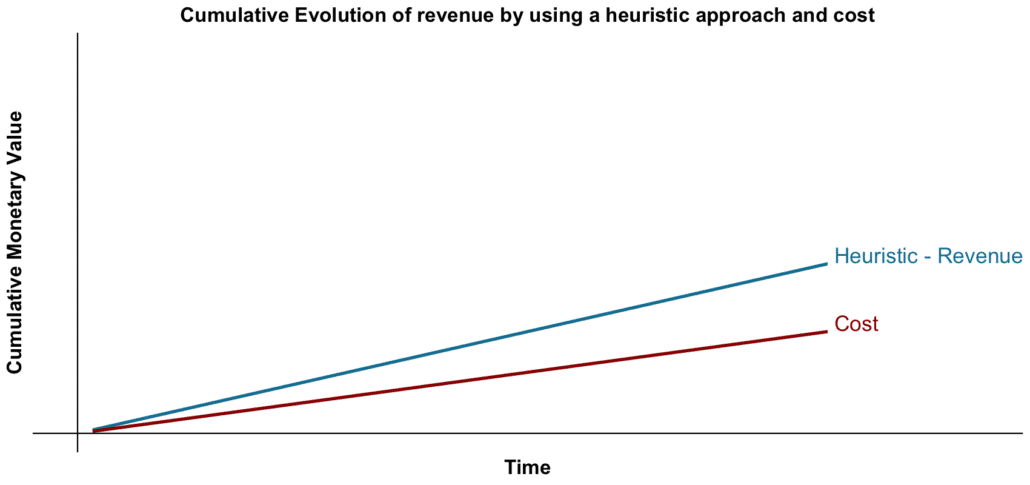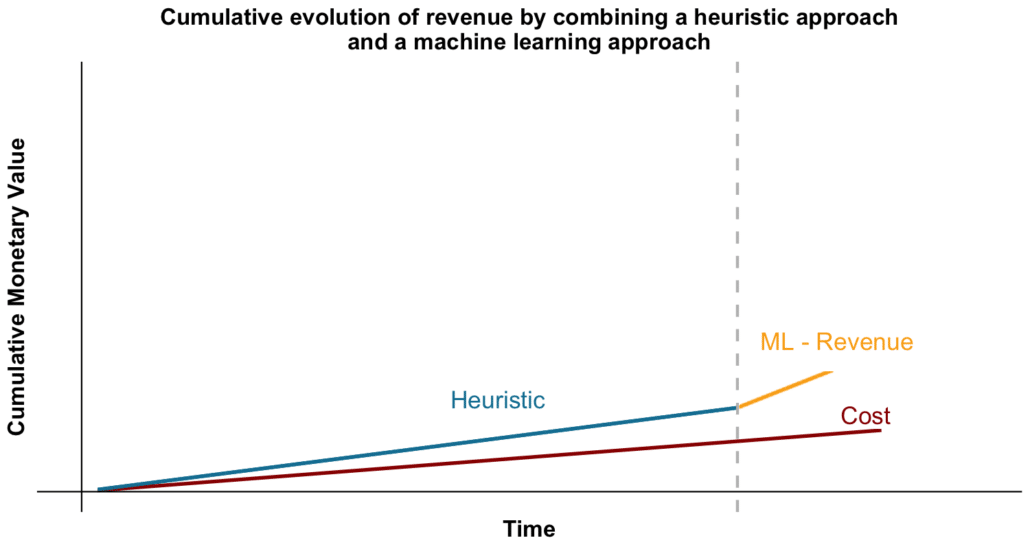Join
"The Marketing Mixtape"
Get the latest digital marketing insights straight to your inbox.
Discover why it’s important to have a toolbox to meet all challenges that arise.


The obvious solution to avoid this depression zone would be to create your own bidding strategy that does not rely on machine learning, but that nevertheless collects data which can later be fed into Google’s Smart Bidding algorithm. Easier said than done. And yet, we have a solution that does just that—a simple solution that delivers during the early-stage slump and provides the data from which the machine can learn and thrive later on.
As an agency, we work very closely with all of Google’s tools on a daily basis, and we have done extensive testing on machine learning algorithms alongside a number of our algorithms developed in-house. Based on the results of these experiences, we have developed and extensively tested a proprietary tool which allows us to reliably get cost-efficient bidding results even when data is scarce. It is a simple, elegant, and efficient solution based on the science of heuristics.

A heuristic is a computational method designed to solve complex decision-making problems giving preference to speed and approximation, rather than absolute accuracy. While it does not have the same long-term maximization potential as machine learning, a heuristic provides imperfect, but immediate and robust results. Think of a heuristic as a rule of thumb or an educated guess, like guesstimating someone’s weight based on their height. As illustrated in the graph above, our heuristic starts earning as soon as we put it out there, and it does not need to go through the same costly learning period to generate ROI as Google’s machine learning does.
Finding the sweet spot
Let’s say running a marketing campaign can be compared with a child learning to ride a bicycle. Using machine learning from the get-go is like starting out the child with a full size road bike, whereas relying on a heuristic is more like putting training wheels on its sides. Without the training wheels, the child will fall over a lot until he or she adapts and figures out how to stay stable. Using the training wheels avoids the falls and optimizes the learning curve. The question then becomes: when can we take off the training wheels?
Heuristics are beneficial in the early stages of a campaign, and machine learning becomes better later on, provided it has quality data to rely on. The trick, therefore, is to switch to machine learning driven decision-making once enough data is there to guarantee solid outcomes. The vertical line in the graph below illustrates the sweet spot, or inflection point, at which the training wheels should come off and you should switch from the heuristic to machine learning.

Where exactly this sweet spot is will depend on the situation, of course. Finding it with accuracy and without incurring too much cost is an art more than a science. That said, there is a simple technique we use to monitor for this inflection point. Once we think we have generated sufficient data to feed into Smart Bidding, we run A/B testing campaigns, where the one is set up to use the machine learning, and the other remains on our heuristic algorithm. We then compare both performances and move forward with the most efficient.
Machine learning is one the most powerful tools out there for marketers, but that does not mean it’s the perfect tool for every job. Every new product is its own case study and every new campaign has a learning curve. It’s important to have a toolbox to meet all challenges that arise.
The point here is not to talk down the effectiveness of machine learning, but rather to understand how and when it can be used most efficiently, and what other solutions may be useful to apply alongside it. Heuristics are one of these solutions, and our proprietary heuristic is a prime example.
Have you ever experienced difficulties with machine learning algorithms or been disappointed with Google Ads? Do you know which of your channels drive the most ROI?
Whatever your questions are, we at comtogether are happy to help. Don’t hesitate to get in touch!
You want to learn more about Google Ads ? Discover our Whitepaper ! 👇
Get the latest digital marketing insights straight to your inbox.
